Development of Composite Hydraulic Actuators: A Review
Abstract
:1. Introduction
2. Design and Research Issues
2.1. Material Anisotropy
2.2. Piston–Barrel Interface
2.3. Connecting the Barrel with the End Caps
3. Research Work on the Development of Composite Cylinders
4. Patents
5. Commercial Designs
6. Conclusions and Outlook
- Material selection and testing for a non-metallic liner. There is no doubt that there are many promising materials that should be subjected to this test. They can be both homogeneous materials as well as composites reinforced with particles in macro-, micro-, or nano-scales.
- Development and validation of an algorithm that optimizes the structure of the cylinder material (type of material and number and angle of layers) using the already published calculation methods.
- Conducting long-term tests of the developed prototypes to determine the structural integrity of the designs as well as liner-braid adhesion.
- An attempt to further eliminate metallic materials from the actuator structure (piston, piston rod, and end caps), which would improve its resistance to environmental conditions and eliminate the influence of the magnetic field on the operation of the element.
Author Contributions
Funding
Data Availability Statement
Conflicts of Interest
References
- Rabie, M.G. Fluid Power Engineering; McGraw Hill: New York, NY, USA, 2009; ISBN 978-0-07-162246-2. [Google Scholar]
- Li, Y.; Shang, Y.; Wan, X.; Jiao, Z.; Yu, T. Design and Experiment on Light Weight Hydraulic Cylinder Made of Carbon Fiber Reinforced Polymer. Compos. Struct. 2022, 291, 115564. [Google Scholar] [CrossRef]
- Li, N. Multi-Degree-of-Freedom Manipulator Driven by Micro Hydraulic System. In Proceedings of the 2016 7th International Conference on Education, Management, Computer and Medicine (EMCM 2016), Shenyang, China, 29–31 December 2016; Atlantis Press: Paris, France, 2016. [Google Scholar]
- Xia, J.; Durfee, W.K. Analysis of Small-Scale Hydraulic Actuation Systems. J. Mech. Des. 2013, 135, 091001. [Google Scholar] [CrossRef] [Green Version]
- Truong, V.T.; Hwang, Y.L.; Cheng, J.K.; Tran, K.D. Dynamics Analysis and Numerical Simulation of Large-Scale Hydraulic Cylinder Actuators. In Engineering Tribology and Materials IV; Trans Tech Publications Ltd.: Zurich, Switzerland, 2020; Volume 900, pp. 14–19. [Google Scholar]
- Xia, J.; Durfee, W.K. Experimentally Validated Models of O-Ring Seals for Tiny Hydraulic Cylinders. In Proceedings of the ASME/BATH 2014 Symposium on Fluid Power and Motion Control, Bath, UK, 10–12 September 2014; American Society of Mechanical Engineers: New York, NY, USA, 2014. [Google Scholar]
- Kollek, W. Microhydraulic Components and Systems—Fundamentals of Design, Modelling and Operation; Oficyna Wydawnicza Politechniki Wrocławskiej: Wrocław, Poland, 2011; ISBN 978-83-7493-617-0. [Google Scholar]
- Ashby, M.F. Chapter 2—The Design Process. In Materials Selection in Mechanical Design, 4th ed.; Ashby, M.F., Ed.; Butterworth-Heinemann: Oxford, UK, 2011; pp. 15–29. ISBN 978-1-85617-663-7. [Google Scholar]
- Joost, W.J. Reducing Vehicle Weight and Improving U.S. Energy Efficiency Using Integrated Computational Materials Engineering. JOM 2012, 64, 1032–1038. [Google Scholar] [CrossRef] [Green Version]
- Kaluza, A.; Kleemann, S.; Fröhlich, T.; Herrmann, C.; Vietor, T. Concurrent Design & Life Cycle Engineering in Automotive Lightweight Component Development. Procedia CIRP 2017, 66, 16–21. [Google Scholar] [CrossRef]
- Marczewska, I.; Bednarek, T.; Marczewski, A.; Sosnowski, W.; Jakubczak, H.; Rojek, J. Practical Fatigue Analysis of Hydraulic Cylinders and Some Design Recommendations. Int. J. Fatigue 2006, 28, 1739–1751. [Google Scholar] [CrossRef]
- Moore, R.L.; Nordmark, G.E.; Kaufman, J.G. Fatigue and Fracture Characteristics of Aluminum Alloy Cylinders under Internal Pressure. Eng. Fract. Mech. 1972, 4, 51–63. [Google Scholar] [CrossRef]
- Cerrini, A.; Beretta, S. Failure Investigation and Design Improvements of Al 7075 Piston for Hydraulic Actuators. Eng. Fail. Anal. 2006, 13, 18–31. [Google Scholar] [CrossRef]
- Kaw, A.K. Mechanics of Composite Materials; CRC Press: Boca Raton, FL, USA, 2005; ISBN 9780429125393. [Google Scholar]
- Gay, D.; Hoa, S.V.; Tsai, S.W. Composite Materials: Design and Applications; CRC Press: Boca Raton, FL, USA, 2002; ISBN 9781420031683. [Google Scholar]
- Datoo, M.H. Mechanics of Fibrous Composites; Elsevier: Amsterdam, The Netherlands, 1991. [Google Scholar]
- Vasiliev, V.V.; Morozov, E.V. Advanced Mechanics of Composite Materials; Elsevier: Amsterdam, The Netherlands, 2007; ISBN 9780080453729. [Google Scholar]
- Peters, S.T. Composite Filament Winding; ASM International: Materials Park, OH, USA, 2011; ISBN 978-1-61503-722-3. [Google Scholar]
- Xia, M.; Takayanagi, H.; Kemmochi, K. Analysis of Multi-Layered Filament-Wound Composite Pipes under Internal Pressure. Compos. Struct. 2001, 53, 483–491. [Google Scholar] [CrossRef]
- Scholz, S.; Kroll, L. Nanocomposite Glide Surfaces for FRP Hydraulic Cylinders—Evaluation and Test. Compos. Part B Eng. 2014, 61, 207–213. [Google Scholar] [CrossRef]
- Pan, Q.; Zeng, Y.; Li, Y.; Jiang, X.; Huang, M. Experimental Investigation of Friction Behaviors for Double-Acting Hydraulic Actuators with Different Reciprocating Seals. Tribol. Int. 2021, 153, 106506. [Google Scholar] [CrossRef]
- Mogbei, O.R. Mechanical Design—Part 5 Materials Review And Selection; Butterworth-Heinemann: Sunderland, UK, 2015. [Google Scholar]
- Skowrońska, J.; Zaczyński, J.; Kosucki, A.; Stawiński, Ł. Modern Materials and Surface Modification Methods Used in the Manufacture of Hydraulic Actuators. In Lecture Notes in Mechanical Engineering; Springer Science and Business Media Deutschland GmbH: Berlin/Heidelberg, Germany, 2021; Volume 24, pp. 427–439. ISBN 9783030595081. [Google Scholar]
- Hashimoto, H.; Tamura, M.; Ichiryu, K. Newly Developed Carbon Fiber Reinforced Plastics (Cfrp) Hydraulic Cylinder Incorporated Stroke Sensor. In JFPS International Symposium on Fluid Power; The Japan Fluid Power System Society: Tokyo, Japan, 1986. [Google Scholar]
- Sumali, H.; Bystrom, E.P.; Krutz, G.W. A Displacement Sensor for Nonmetallic Hydraulic Cylinders. IEEE Sens. J. 2003, 3, 818–826. [Google Scholar] [CrossRef]
- Mantovani, S.; Costi, D.; Strozzi, A.; Bertocchi, E.; Dolcini, E. Double Acting Composite Tube Cylinder for Fluid Power Applications: A Design Procedure. In Proceedings of the International Conference on Mechanical, Automotive and Aerospace Engineering, Kuala Lumpur, Malaysia, 17–19 May 2011. [Google Scholar]
- Mantovani, S. Feasibility Analysis of a Double-Acting Composite Cylinder in High-Pressure Loading Conditions for Fluid Power Applications. Appl. Sci. 2020, 10, 826. [Google Scholar] [CrossRef] [Green Version]
- Ritchie, J.; Mumtahina, U.; Rasul, M.; Sayem, A. Alternative Materials in Hydraulic Cylinder Design—Application Of Carbon Fibre Components. Mech. Eng. Res. J. 2013, 9, 43–47. [Google Scholar]
- Nowak, T.; Schmidt, J. Non-Linear Mechanical Analysis of the Composite Overwrapped Cylinder for Hydraulic Applications. Adv. Manuf. Sci. Technol. 2014, 37, 31–48. [Google Scholar] [CrossRef] [Green Version]
- Nowak, T.; Schmidt, J. Prediction of Elasto-Plastic Behavior of Pressurized Composite Reinforced Metal Tube by Means of Acoustic Emission Measurements and Theoretical Investigation. Compos. Struct. 2014, 118, 49–56. [Google Scholar] [CrossRef]
- Nowak, T.; Schmidt, J. Theoretical, Numerical and Experimental Analysis of Thick Walled Fiber Metal Laminate Tube under Axisymmetric Loads. Compos. Struct. 2015, 131, 637–644. [Google Scholar] [CrossRef]
- Zhang, J.; Bao, J.; Zhang, D.; Xu, B.; Chao, Q. Inlaid Connection of Carbon Fibre Reinforced Plastic Cylinder. In Proceedings of the 2016 IEEE International Conference on Aircraft Utility Systems (AUS), Beijing, China, 10–12 October 2016; pp. 1024–1029. [Google Scholar]
- El Asswad, M.; AlFayad, S.; Khalil, K. Experimental Estimation of Friction and Friction Coefficient of a Lightweight Hydraulic Cylinder Intended for Robotics Applications. Int. J. Appl. Mech. 2018, 10, 1850080. [Google Scholar] [CrossRef]
- Elasswad, M.; Tayba, A.; Abdellatif, A.; Alfayad, S.; Khalil, K. Development of Lightweight Hydraulic Cylinder for Humanoid Robots Applications. Proc. Inst. Mech. Eng. Part C J. Mech. Eng. Sci. 2018, 232, 3351–3364. [Google Scholar] [CrossRef]
- Solazzi, L. Feasibility Study of Hydraulic Cylinder Subject to High Pressure Made of Aluminum Alloy and Composite Material. Compos. Struct. 2019, 209, 739–746. [Google Scholar] [CrossRef]
- Solazzi, L.; Buffoli, A. Telescopic Hydraulic Cylinder Made of Composite Material. Appl. Compos. Mater. 2019, 26, 1189–1206. [Google Scholar] [CrossRef]
- Solazzi, L. Design and Experimental Tests on Hydraulic Actuator Made of Composite Material. Compos. Struct. 2020, 232, 111544. [Google Scholar] [CrossRef]
- Solazzi, L. Stress Variability in Multilayer Composite Hydraulic Cylinder. Compos. Struct. 2021, 259, 113249. [Google Scholar] [CrossRef]
- Solazzi, L.; Buffoli, A. Fatigue Design of Hydraulic Cylinder Made of Composite Material. Compos. Struct. 2021, 277, 114647. [Google Scholar] [CrossRef]
- S P, P.K.; Lee, S.-S. Design and Experimental Analyses of Hybrid Piston Rods Used in Hydraulic Cylinders under Axial Load. Appl. Sci. 2021, 11, 8552. [Google Scholar] [CrossRef]
- Siegfarth, M.; Pusch, T.P.; Pfeil, A.; Renaud, P.; Stallkamp, J. Multi-Material 3D Printed Hydraulic Actuator for Medical Robots. Rapid Prototyp. J. 2020, 26, 1019–1026. [Google Scholar] [CrossRef]
- Coskun, T.; Sahin, O.S. Design of the Composite Hydraulic Cylinder with Geodesic Dome Trajectory: A Numerical Study. Polym. Compos. 2022, 43, 5894–5907. [Google Scholar] [CrossRef]
- Lubecki, M.; Stosiak, M.; Leśniewski, T. Comparative Studies of Tribological Properties of Selected Polymer Resins for Use in Hydraulic Systems. Tribologia 2019, 288, 31–37. [Google Scholar] [CrossRef]
- Lubecki, M.; Stosiak, M.; Leśniewski, T. Antiwear Coatings for Multi-Material Composite Hydraulic Cylinder. A Tribological Study. In TRANSBALTICA XII: Transportation Science and Technology; Prentkovskis, O., Yatskiv (Jackiva), I., Skačkauskas, P., Junevičius, R., Maruschak, P., Eds.; Springer International Publishing: Cham, Switzerland, 2022; pp. 184–193. [Google Scholar]
- Mayer, P.; Lubecki, M.; Stosiak, M. An Influence of the Surface Treatment of the Composite Substrate on the Pull-Off Strength of the Aged Polyurea And Polyurethane Coatings. In Proceedings of the 4th Polish Congress of Mechanics and 23rd International Conference on Computer Methods in Mechanics PCM-CMM-2019, Krakow, Poland, 8–12 September 2019. [Google Scholar]
- Mayer, P.; Lubecki, M.; Stosiak, M.; Robakowska, M. Effects of Surface Preparation on the Adhesion of UV-Aged Polyurethane Coatings. Int. J. Adhes. Adhes. 2022, 117, 103183. [Google Scholar] [CrossRef]
- Lubecki, M.; Stosiak, M.; Gazińska, M. Numerical and Experimental Analysis of the Base of a Composite Hydraulic Cylinder Made of PET. In Lecture Notes in Mechanical Engineering; Springer Science and Business Media Deutschland GmbH: Berlin/Heidelberg, Germany, 2021; Volume 24, pp. 396–405. [Google Scholar]
- Lubecki, M.; Michał, S.; Banaś, M.; Stryczek, P.; Urbanowicz, K. Experimental and Theoretical Analysis of Hydraulic Cylinder Loads. In Fatigue and Fracture of Materials and Structures; Lesiuk, G., Duda, S., Correia, J.A.F.O., De Jesus, A.M.P., Eds.; Springer International Publishing: Cham, Switzerland, 2022; pp. 85–91. [Google Scholar]
- Dirkin, W.; Douglass, D.; Tootle, J.; Benton, T. Fluid Actuator Including Composite Cylinder Assembly. U.S. Patent 4,685,384, 1986. [Google Scholar]
- Ching, F. Composite Cylinder for Use in Aircraft Hydraulic Actuator. U.S. Patent 5,415,079, 1992. [Google Scholar]
- Yu, X.; Waldenstrom, C. Method of Winding a Fiber-Resin Composite Pressure Fluid Cylinder. U.S. Patent 5,435,868, 1993. [Google Scholar]
- Fish, E. Fluid Cylinder End Cap Assembly. U.S. Patent 5,465,647, 1994. [Google Scholar]
- Fish, E. Removable End Plug. U.S. Patent 7,240,607, 2007. [Google Scholar]
- Stelling, O.; Otte, B.; Petker, J. Composite High Pressure Hydraulic Actuators for Lightweight Applications. In Proceedings of the 9th International Fluid Power Conference (IFK), Aachen, Germany, 24–26 March 2014. [Google Scholar]
- Parker Hannifin Corporation Lightraulics® Composite Hydraulic Cylinders; Catalogue HY07-1410/UK. 2017. Available online: https://www.parker.com/literature/Cylinder%20Europe/Cylinder%20Europe%20-%20English%20Literature/Composites/Composite%20Cylinders_1410-UK.pdf (accessed on 1 December 2022).
- Polygon Composites Technology. Composite Finished Cylinders Design Guide; Polygon Composites Technology: Walkerton, ON, Canada, 2012. [Google Scholar]
- Polygon Composites Technology Cylinder Tubing. Available online: https://polygoncomposites.com/tailored-solutions/cylinder-tubing/ (accessed on 23 September 2021).
- Liebherr Liebherr Hybrid Cylinder. Available online: https://www.liebherr.com/en/deu/products/components/hydraulics/hybrid-cylinders/hybrid-cylinder.html#soentstehtihrhybridzylinder (accessed on 6 December 2021).


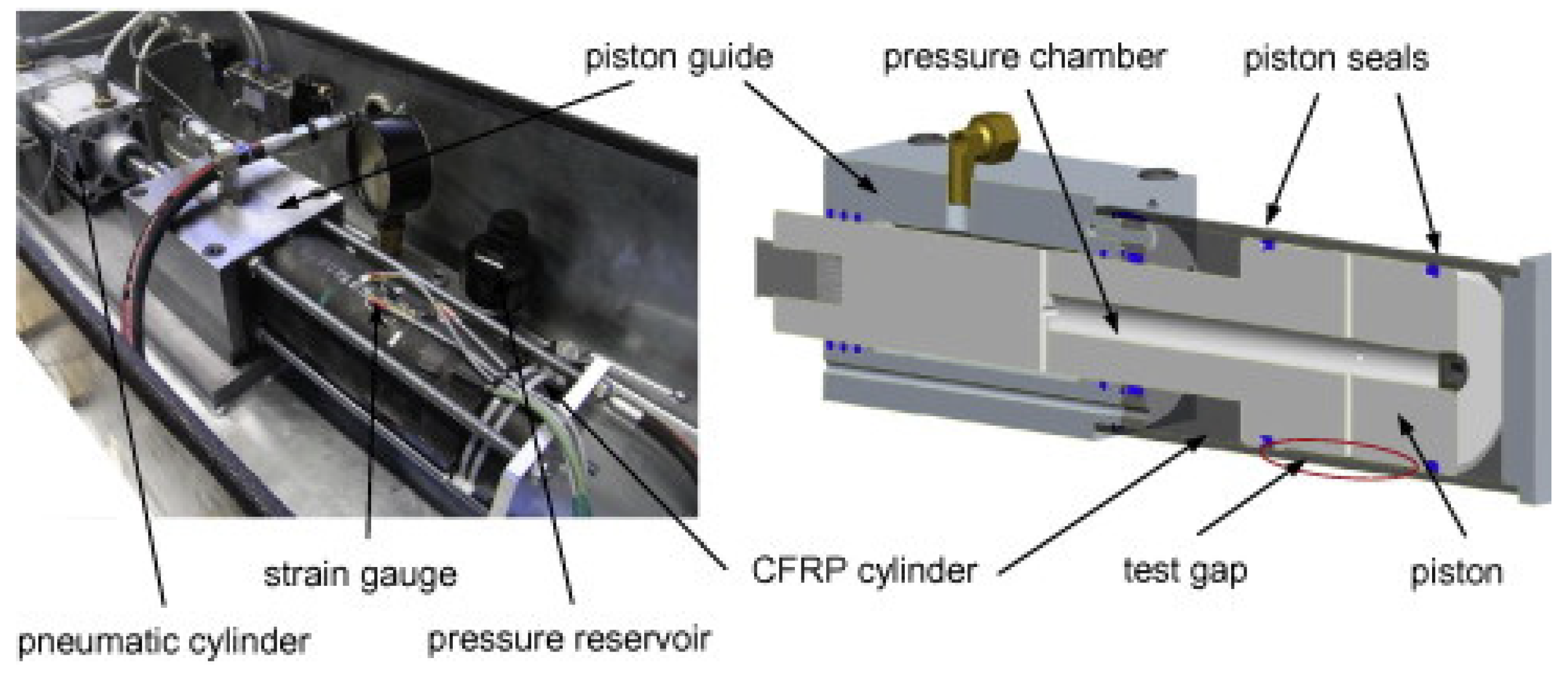
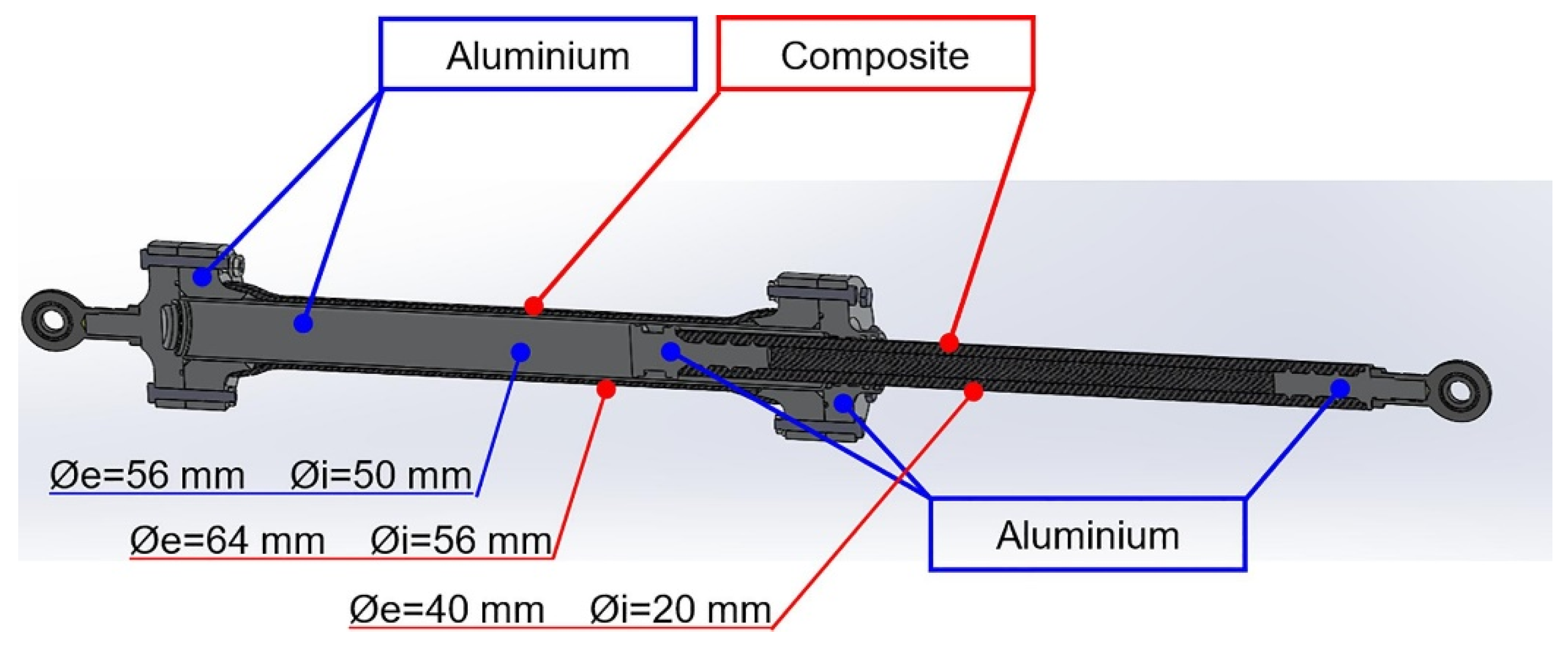

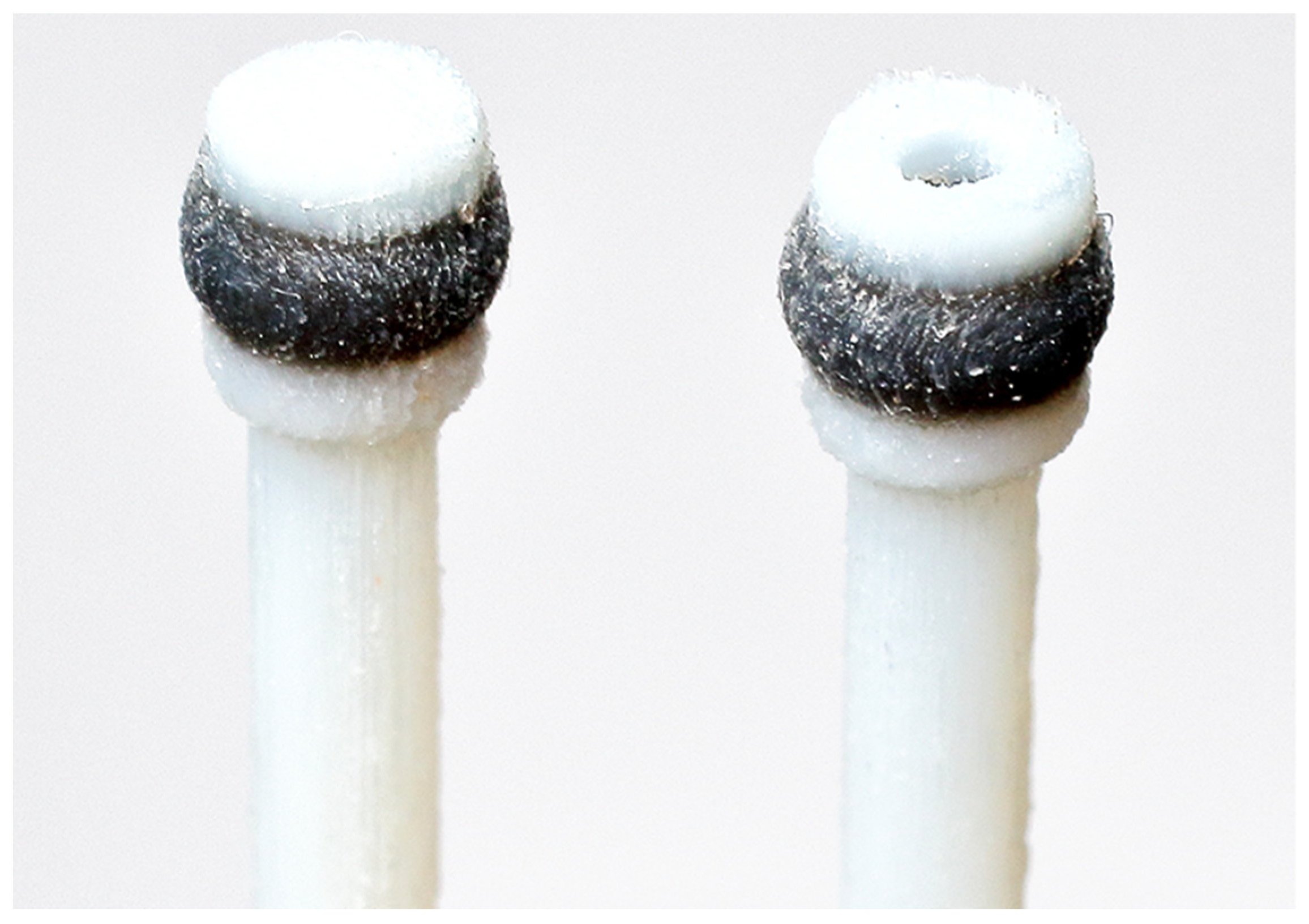

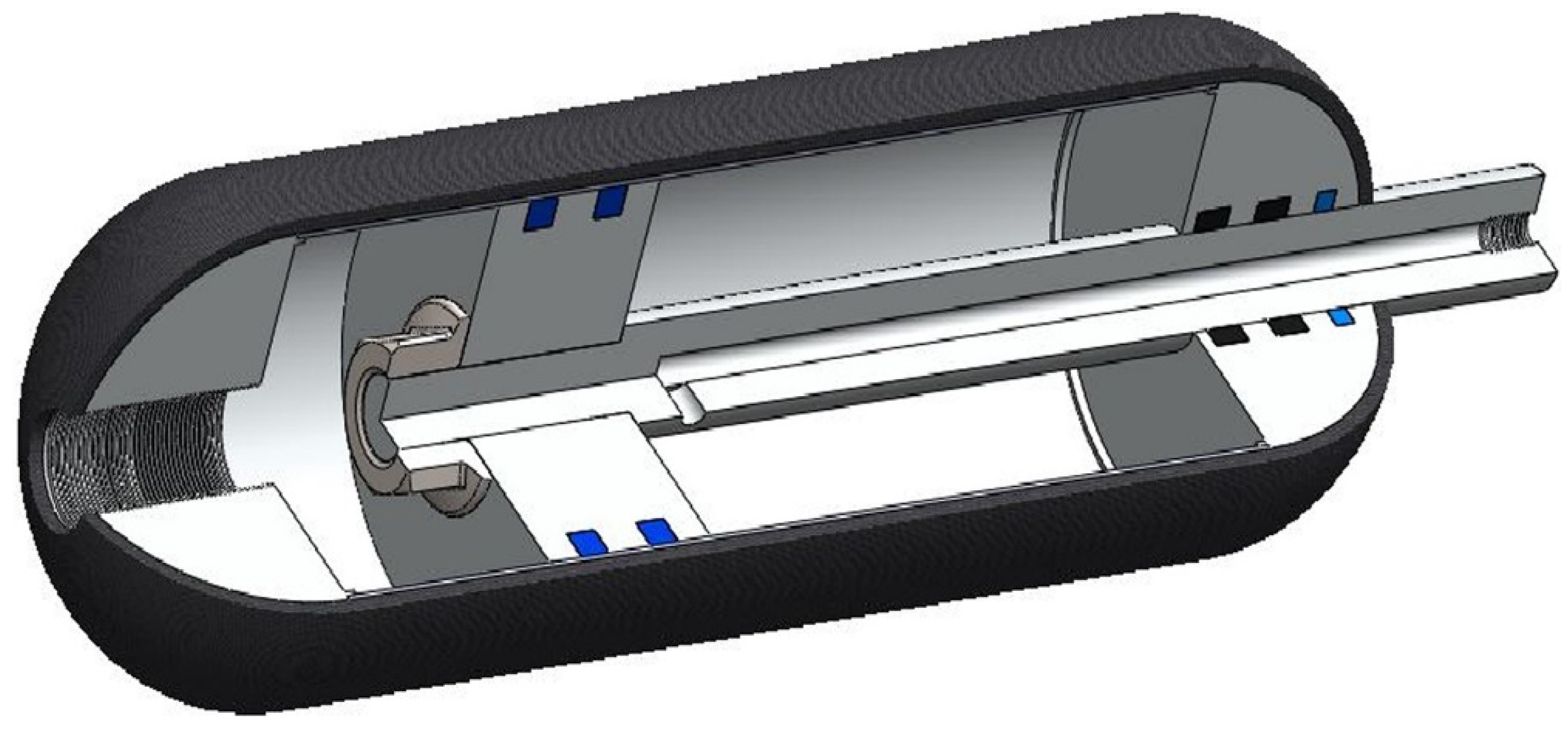





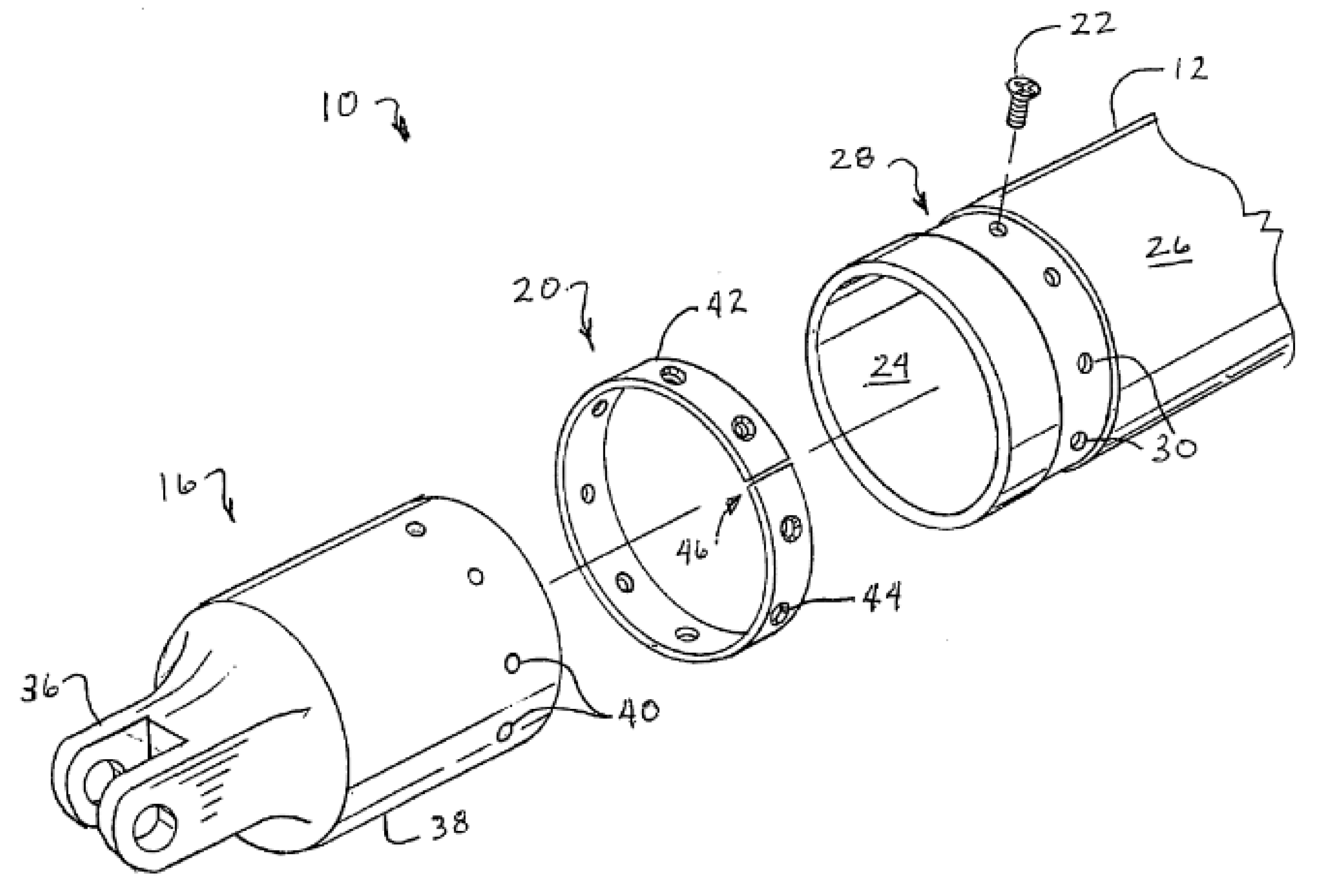
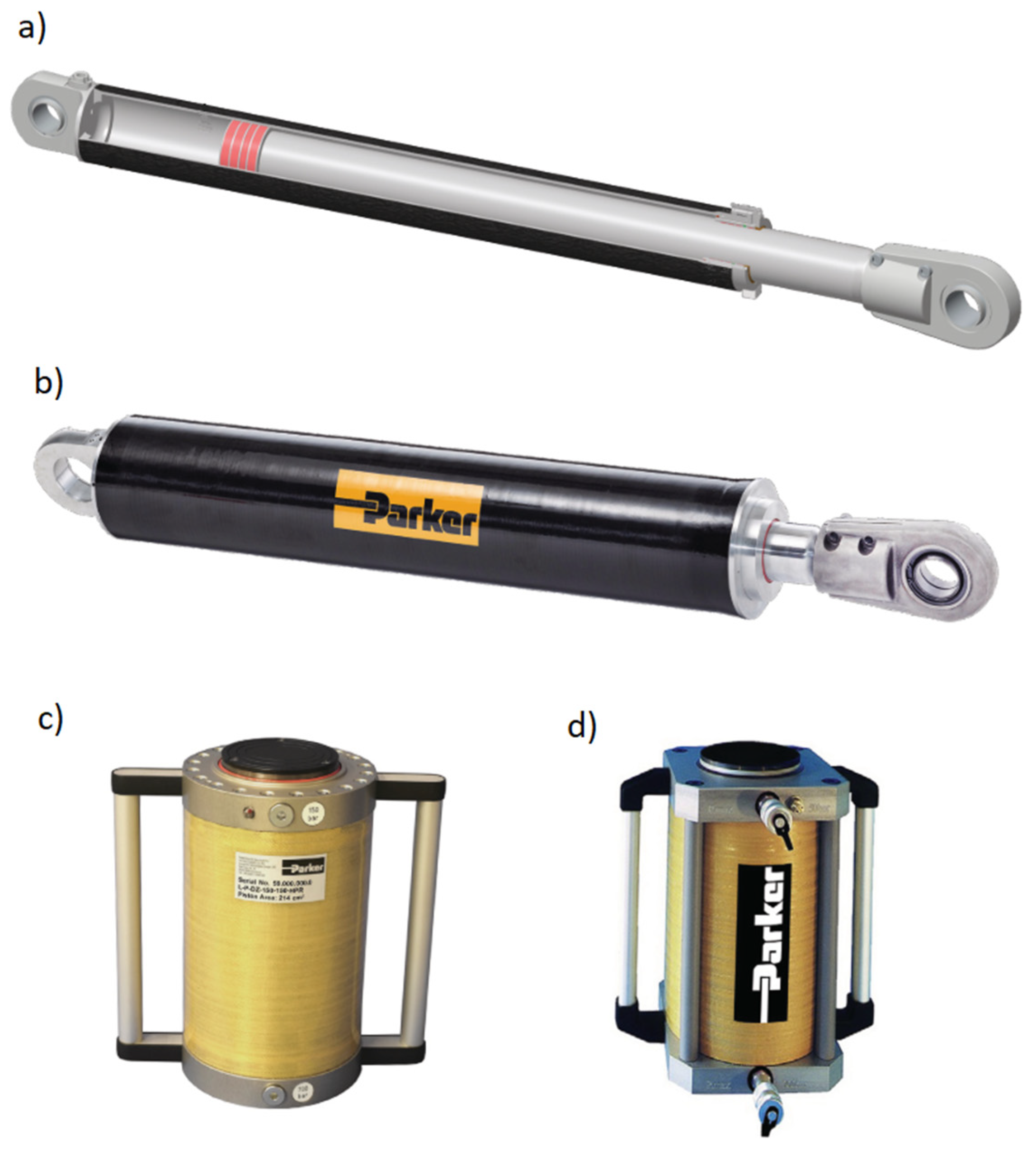

Publisher’s Note: MDPI stays neutral with regard to jurisdictional claims in published maps and institutional affiliations. |
© 2022 by the authors. Licensee MDPI, Basel, Switzerland. This article is an open access article distributed under the terms and conditions of the Creative Commons Attribution (CC BY) license (https://creativecommons.org/licenses/by/4.0/).
Share and Cite
Lubecki, M.; Stosiak, M.; Skačkauskas, P.; Karpenko, M.; Deptuła, A.; Urbanowicz, K. Development of Composite Hydraulic Actuators: A Review. Actuators 2022, 11, 365. https://doi.org/10.3390/act11120365
Lubecki M, Stosiak M, Skačkauskas P, Karpenko M, Deptuła A, Urbanowicz K. Development of Composite Hydraulic Actuators: A Review. Actuators. 2022; 11(12):365. https://doi.org/10.3390/act11120365
Chicago/Turabian StyleLubecki, Marek, Michał Stosiak, Paulius Skačkauskas, Mykola Karpenko, Adam Deptuła, and Kamil Urbanowicz. 2022. "Development of Composite Hydraulic Actuators: A Review" Actuators 11, no. 12: 365. https://doi.org/10.3390/act11120365





